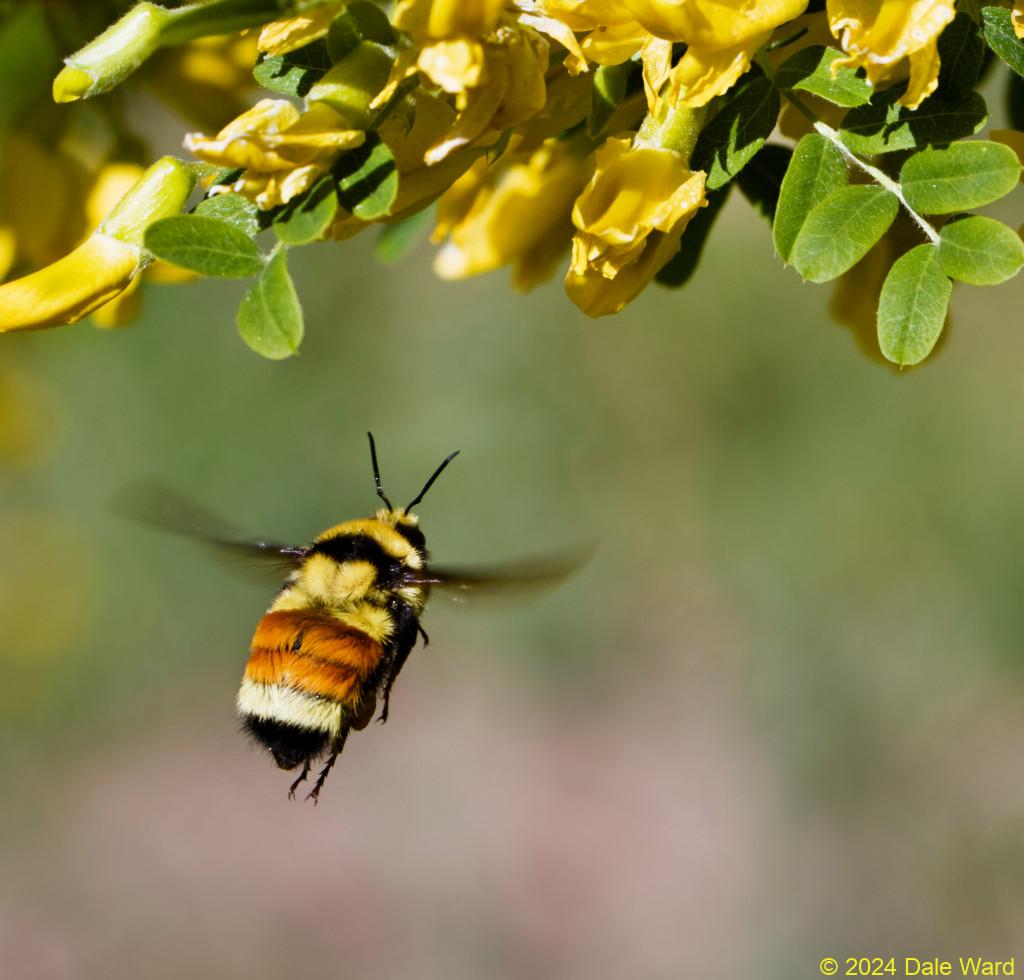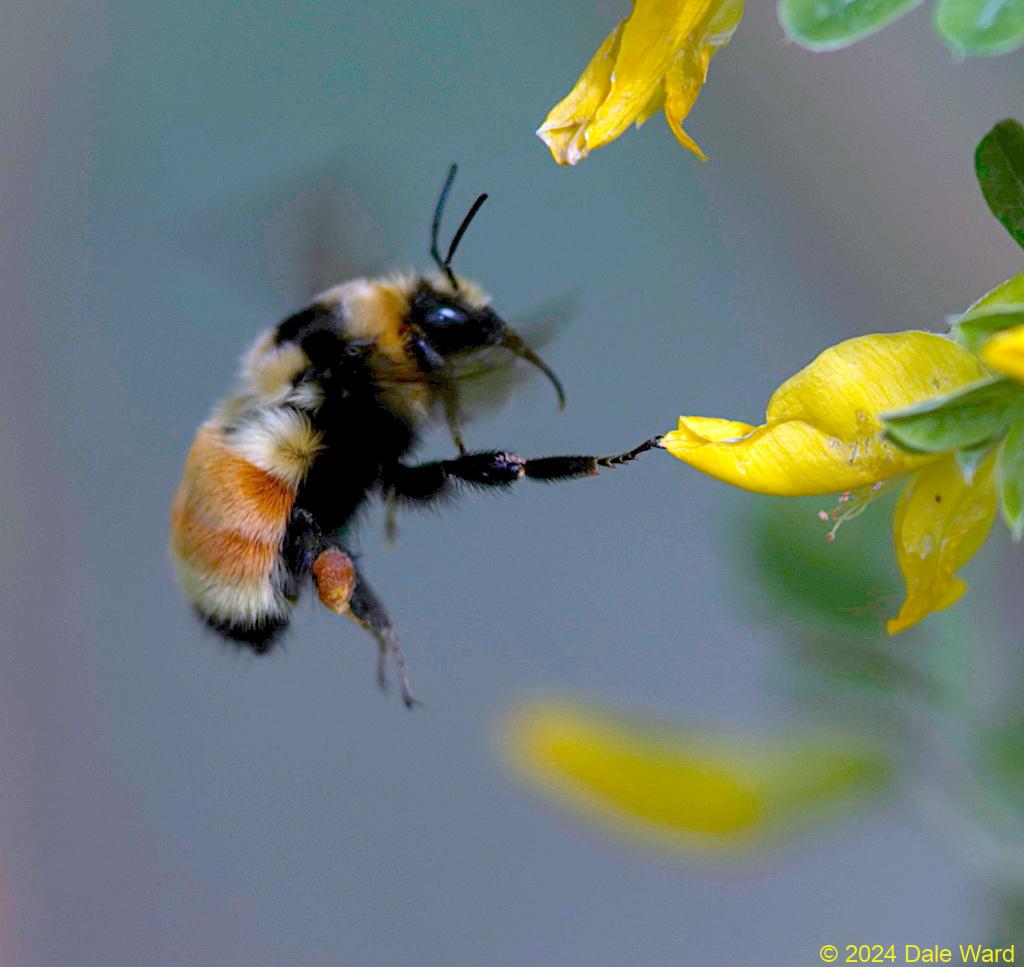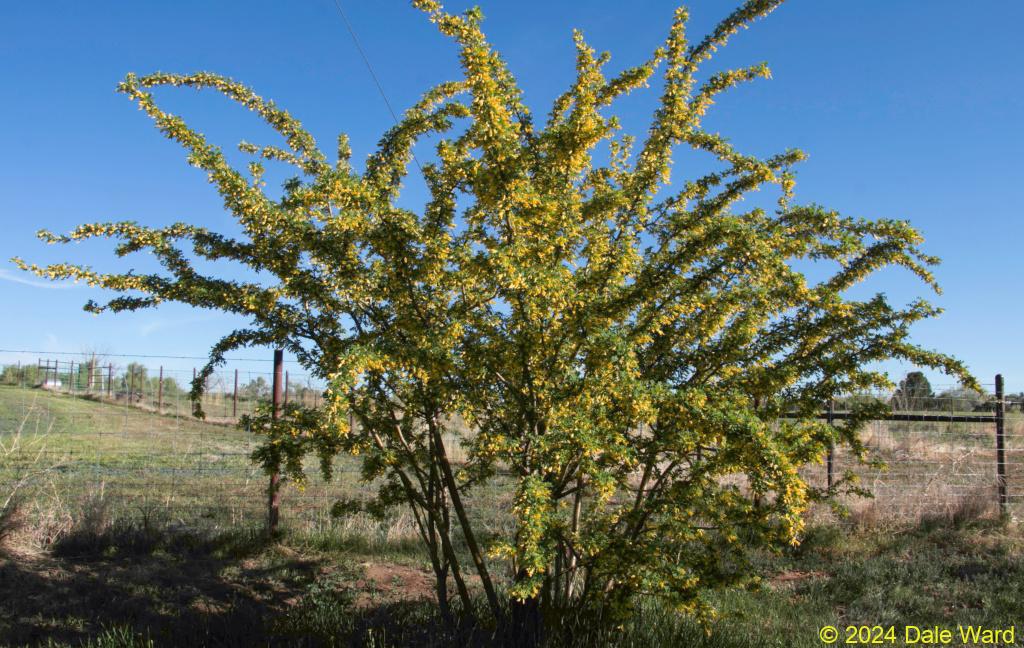Watching Hunt's Bumble Bee (Bombus huntii) on Caragana in the Springtime
 Hunt’s Bumblebee (_Bombus huntii_) approaching a Caragana flower.
Hunt’s Bumblebee (_Bombus huntii_) approaching a Caragana flower.
One of the big Springtime events here in Southwestern Colorado is seeing the Hunt’s Bumblebee queens coming in to the Caragana.
The Caraganas usually bloom in late April/early May here. Seeing the blooms is such a relief after the Winter. We’re still likely to get frosts, even snows, but it just feels so good to see these signs of life, these ludicrously bright splashes of color. And to hear the loud droning buzz of the enormous lumbering Bumblebees.
 Hunt’s Bumblebee (_Bombus huntii_) approaching a Caragana flower.
Hunt’s Bumblebee (_Bombus huntii_) approaching a Caragana flower.
Bumblebee nests only last for a year - they are founded in the Springtime, then disband and die out by Fall or Winter. I guess the Bumblebee colonies are a lot like annual flowers in that regard.
So the Bumblebees we see in the early Springtime are queens that were born last year. They left their home colonies in the Fall, mated and then found a sheltered spot to wait out the Winter. It’s a pretty tough start to life.
When Springtime comes, the young, overwintered queens emerge from their sheltered nooks and crannies to look for a nest site. They like to nest in preexisting holes in the ground - rodent burrows are perfect. They especially seem to like to build in the furry coziness of old mouse nests.
The queens build wax pots for storing pollen and honey inside the burrows. They’ll raise the first batch of larvae themselves. It takes about a month before those first offspring will be old enough to help her.
I think that’s what most of these early Bumblebees on the Caragana are - young queens struggling to raise that first batch of bees.
 Bombus huntii reaches out to land on a Caragana flower.
Bombus huntii reaches out to land on a Caragana flower.
After she’s raised the first group of worker bees, the queen won’t leave the nest very much. She’ll rely on the workers for that. She will instead concentrate on laying more eggs, making more workers, males, and more queens.
According to The Bumblees of Colorado, there are at least 24 species of Bumblebees in Colorado. I’ve seen at least two other species of Bumblebee on our property, but I think these Bombus huntii are my favorites.
 Hunt’s Bumblebee (_Bombus huntii_) approaching a Caragana flower.
Hunt’s Bumblebee (_Bombus huntii_) approaching a Caragana flower.
These flowers that the Bumblebees so love are of Caragana arborescens - “Siberian Peashrubs”.
Caragana are non-native plants, originally from Siberia and Manchuria. We purchased a couple of these from plant nurseries, but I think most of ours were initially part of a USDA planting program. The USDA brochure says that Caragana are supposed to tolerate “…infertile soils…alkalaine soils…deicing salt…”, and their chief value is the “…ability to adapt to poor sites.”
Ouch! Well…that diagnosis does hurt a little bit, but they are probably not entirely wrong about our site. Given our soils and our extreme weather conditions, I guess that plants adapted for life in Siberia are indeed a good fit here.
 Caragana in flower on the fence line.
Caragana in flower on the fence line.
As I write this, it’s late November. The leaves have fallen from the trees, the nights are all freezing. Life seems to be winding down for the year, pulling back into whatever shelter it can find. I can’t help but think of the young Bumblebee queens, out in the world on their own, hiding from the killing cold.
And, like me, waiting for the Springtime.
Sources:
Wright, Abigail, Crystal L. Boyd, M. Deane Bowers and Virginia L. Scott. The Bumble Bees of Colorado - A Pictorial Identification and Information Guide. Available as a PDF from University of Colorado (Bounder) here: https://www.colorado.edu/cumuseum/sites/default/files/attached-files/thebumblebeesofcolorado-2017.pdf . This is what I’ve been using form most of my Bumblebee identifications. It’s a really fabulous document, with species accounts and hugely useful tips for species identifification.
Colorado State University’s “Colorado Insects of Interest - Bumble Bees” - Available as a PDF a here: https://webdoc.agsci.colostate.edu/bspm/arthropodsofcolorado/Bumble-Bees.pdf
United States Department of Agrigulture (USDA)/Natural Resources Conservation Service (NRCS) National Plant Data Center - Plant Guide - Siberian Peashrub Caragana arborescens. Downloadable here: https://plants.usda.gov/DocumentLibrary/plantguide/pdf/pg_caar18.pdf